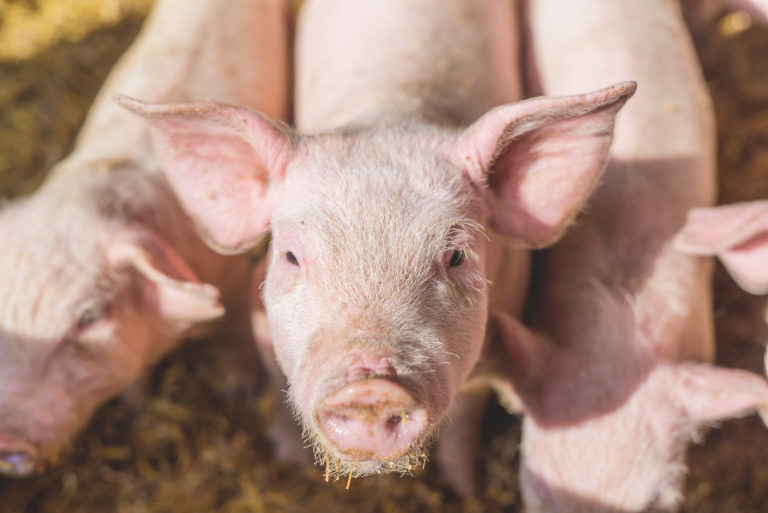In Response to Lawsuit, EPA Pledges to Strengthen Standards for Slaughterhouse Water Pollution
By: Waterkeeper Alliance

In a victory for clean water, EPA announced yesterday that it will update water pollution control standards for the slaughterhouse industry following a December 2019 lawsuit from community and conservation organizations.
“It’s a great first step that EPA has decided to finally modernize the standards for meat and poultry plants across the country, which had not been updated since at least 2004,” said Sylvia Lam, Attorney for the Environmental Integrity Project, “We now expect EPA to let us know when they plan to propose updated standards to protect our waterways and communities, since the current limits are allowing an excessive amount of pollution.”
Earthjustice attorney Alexis Andiman said: “Slaughterhouses are leading sources of nitrogen and phosphorus pollution, and their pollution disproportionately harms under-resourced communities, low-income communities, and communities of color. We applaud EPA for recognizing that it’s time to update the outdated standards governing pollution from slaughterhouses. Together with our partners, we look forward to working with EPA to ensure that the new standards adequately protect people and the environment.”
In a press release issued late Wednesday afternoon, EPA announced that it will initiate a rulemaking process to reduce pollution from three industries: Meat and poultry processing plants, which include slaughterhouses; metal finishing businesses; and manufacturers of organic chemicals that discharge polyfluoroalkyl substances (PFAS).
Along with its announcement, EPA reported that 74 percent of slaughterhouses that discharge pollution directly into rivers and streams are within one mile of under-resourced communities, low-income communities, or communities of color.
“This finding makes it even more imperative for EPA to issue standards that protect the public as soon as possible,” said Lam.
In December 2019, the Environmental Integrity Project and Earthjustice filed a federal lawsuit against EPA on behalf of Cape Fear River Watch, Rural Empowerment Association for Community Help, Waterkeepers Chesapeake, Animal Legal Defense Fund, Center for Biological Diversity, Environment America, Food & Water Watch, The Humane Society of the United States, and Waterkeeper Alliance. The lawsuit challenged EPA’s prior refusal to modernize pollution standards for slaughterhouses, in light of evidence demonstrating that revision is necessary.
More than 8 billion chickens, 100 million pigs, and 30 million cattle are processed each year in more than 7,000 slaughterhouses across the country. An estimated 4,700 of these slaughterhouses discharge polluted water to waterways, including the iconic Chesapeake Bay, either directly or indirectly through municipal sewage treatment plants.
“Harmful algal blooms from uncontrolled nitrogen and phosphorus pollution are a major problem in all 50 states – a problem that can sicken or kill people exposed to dangerous algal toxins, destroy fisheries, and decimate local economies,” added Kelly Hunter Foster, Senior Attorney for Waterkeeper Alliance. “We are pleased that EPA has decided to take action and require modern pollution controls at slaughterhouses – the leading industrial sources of this pollution – as required by the Clean Water Act.”
The federal Clean Water Act requires EPA to set industry-wide water pollution standards for slaughterhouses and other industries and to review those standards each year to decide whether updates are appropriate to keep pace with advances in pollution-control technology.
During the Trump Administration, on October 24, 2019, EPA announced that it would not revise the federal water pollution standards for slaughterhouses that discharge pollution directly into waterways, and it would not create standards for slaughterhouses that send their pollution to sewage plants before discharging into rivers or streams. This is despite the fact that EPA identified slaughterhouses as the largest industrial source of nitrogen water pollution without updated standards.
An October 2018 report from the Environmental Integrity Project and Earthjustice, “Water Pollution from Slaughterhouses,” reviewed the records of 98 meat and poultry processing plants across the U.S. and found that the median facility released an average of 331 pounds of total nitrogen per day into local rivers and streams, about as much as the amount contained in raw sewage from a town of 14,000 people.
Many slaughterhouses released far more, with the JBS USA pork processing plant in Beardstown, Illinois, for example, releasing 1,849 pounds of nitrogen a day in 2017 to an Illinois River tributary—equivalent to the load in raw sewage from a city of 79,000 people. This showed that the national standards were no longer driving the industry to reduce its water pollution, as intended by the Clean Water Act.
In its September 8 announcement, EPA also identified slaughterhouses as the largest industrial source of phosphorus water pollution in the nation. Moreover, EPA expressed a need to develop pretreatment standards for slaughterhouses—finding that 73 percent of local sewage plants that receive wastewater from slaughterhouses have violated pollution limits in their Clean Water Act permits for pollutants found in slaughterhouse effluent.